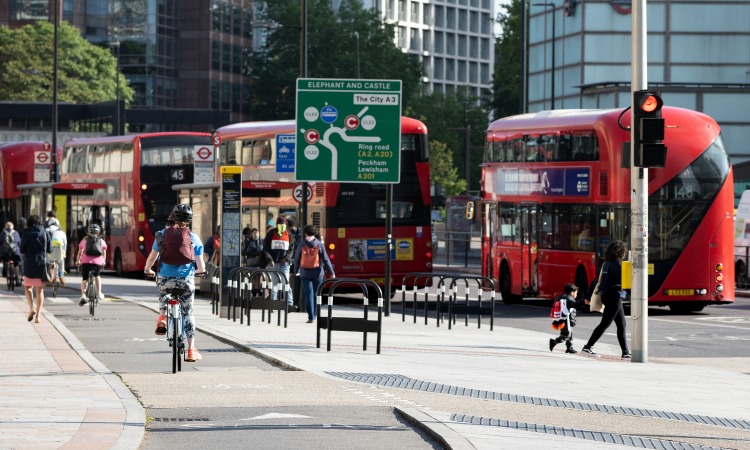
The Mayor aims to revamp London’s streets and enhance public transportation as part of his Transportation Strategy. To make this happen, the Mayor intends to promote the use of public transportation and encourage people to walk and cycle more frequently. Hence, London’s transport authority, TfL, is set to implement new measures to reduce air pollution in the city. These measures include introducing zero emission zones in town centres and central London from 2025, and a London-wide zero emission zone by 2050. TfL will also only purchase the greenest, cleanest buses, with all new double-deck buses being hybrid, electric or hydrogen from next year. By 2037, all 9,200 buses across London will be zero emission. The plans were developed following a public consultation on the Mayor’s Transport Strategy:
- Walking and Cycling
London is set to invest £2.1 billion in creating healthier streets and encouraging more walking, cycling, and public transport use. This includes improving road safety, public spaces, and air quality. TfL and the London boroughs will prioritise walking by creating more traffic-free areas, starting with the transformation of Oxford Street and changes to Parliament Square, as well as trialling street closures to motor traffic. Programs such as Legible London will provide accessible, safe, and attractive walking environments. A new London-wide network of strategic cycling routes will also be introduced, enabling all types of trips by bike.
The goal is for 70% of Londoners to live within 400 meters of a high-quality, safe cycle route by 2041, which will encourage at least 20 minutes of active travel each day for better health.
- Low Emission Bus Zones
London’s Mayor invests over £300 million to modernize the city’s bus fleet. This includes retrofitting thousands of buses and phasing out pure diesel double-deck buses starting in 2018. To combat pollution in the capital’s most contaminated areas, 12 Low Emission Bus Zones have been announced, with the first located in Putney High Street and Brixton Road.
The zones are projected to reduce emissions by 84%, improving air quality for thousands of school children in these areas. For additional information on the other zones in London, visit TfL’s website.
- Electric vehicles
London is investing £18 million to facilitate ownership of electric vehicles in the city. Rapid charging points, capable of charging vehicles in around 30 minutes, will be installed across the capital, offering a faster and more convenient charging option than standard units which can take up to 4 hours. The initial plan is to install 75 rapid charging points by the end of 2017, with the network expanding to 150 by the end of 2018 and 300 by 2020. In addition, 1500 new standard electric vehicle charging points will be installed across 25 boroughs, representing a £4.5 million investment. These initiatives will make electric vehicles a more practical option for Londoners.
- Zero emission taxis
To combat air pollution in London, new taxis licensed after January 1, 2018, must be zero-emission capable. This initiative includes new “zero-emission” ranks and a network of rapid electric charging points to support the transition to greener technologies. By the end of 2018, numerous charging points will be solely dedicated to the iconic black cab fleet. TfL aims to make all taxis and private hire vehicles zero-emission capable by 2033. The Taxi and Private Hire Action Plan addresses safety regulations and how new technology is transforming the way Londoners access taxis and PHVs. Visit TfL’s website for information on the new requirements.
What are your thoughts? Let us know in the comments!
REFERENCES:
Green Transport. (n.d.). London City Hall. https://www.london.gov.uk/programmes-strategies/transport/green-transport
Matters, T. F. L. |. E. J. (n.d.). The Mayor’s Transport Strategy. Transport for London. https://tfl.gov.uk/corporate/about-tfl/the-mayors-transport-strategy

